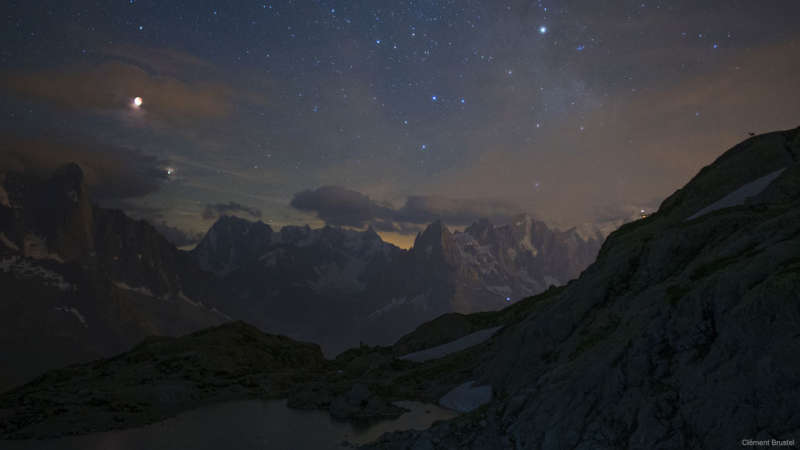
|
Credit & Copyright: Cl╚ment Brustel
Explanation:
There is something unusual about this astronomically-oriented photograph.
It's not obvious -- it was discovered only during post-processing.
It is not
the Moon, although capturing the Moon rising during a total lunar eclipse is
quite an unusually interesting sight.
(Other interesting images also captured during last month's eclipse can be found
here.)
It is not
Mars, found to the lower right of the Moon,
although Mars being captured near its brightest
also makes for an unusually interesting sight.
(Mars is visible nearly the entire night this month; other interesting images of
it can be found
here.)
It is not the
foreground mountains,
although the French
Alps
do provide unusually spectacular perspectives on
planet Earth.
(Other interesting mountainous starscapes can be found
here.)
It is the goat.
|
January February March April May June July August September October November December |
| ||||||||||||||||||||||||||||||||||||||||||||||||
NASA Web Site Statements, Warnings, and Disclaimers
NASA Official: Jay Norris. Specific rights apply.
A service of: LHEA at NASA / GSFC
& Michigan Tech. U.
Based on Astronomy Picture
Of the Day
Publications with keywords: lunar eclipse - Mars
Publications with words: lunar eclipse - Mars
See also:
- APOD: 2025 November 3 ┴ A Double Helix Lunar Eclipse
- APOD: 2025 September 28 ┴ Leopard Spots on Martian Rocks
- APOD: 2025 September 11 ┴ The Umbra of Earth
- APOD: 2025 July 15 ┴ Collapse in Hebes Chasma on Mars
- APOD: 2025 July 6 ┴ The Spiral North Pole of Mars
- APOD: 2025 June 29 ┴ Dark Sand Cascades on Mars
- APOD: 2025 June 22 ┴ A Berry Bowl of Martian Spherules
